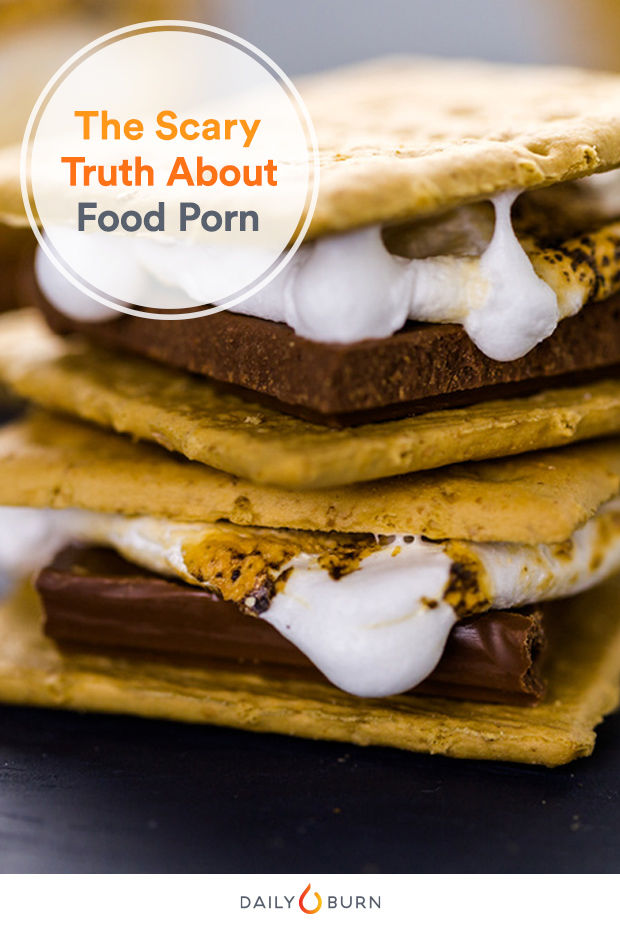
We’re only a week and a half into September, but this month has already celebrated National Gyro Day, National Baby Back Ribs Day, National Cheese Pizza Day, National Coffee Ice Cream Day, National Beer Lover’s Day, National Hot Dog Day, and, of course, National “I Love Food” Day.
Drooling yet? That’s the point. While these social media-promoted, food porn-reveling, FOMO-spurring holidays sound fun and relatively harmless on their own (what’s wrong with celebrating National Cream-Filled Doughnut Day with a Boston Cream once per year?), they could do a lot worse to your relationship with food and, over the long term, your health.
RELATED: Rainbow Bagels, Ramen Tacos: 2016’s Unhealthiest Food Trends
“With these holidays, many people eat up simply because some part of their brain believes they will never have this opportunity again, and that to miss out would be something to regret in the future,” says Debra Nessel, RD, CDE, a registered dietitian with Torrance Memorial Medical Center in California. It doesn’t matter how healthy they try to eat, they become a clean-ice-cream-tub club member, no matter how full they are.
365 Days of FOMO-Fueled Food Holidays
“The #butter hashtag alone was used more than 7 million times in the past 90 days.”
“People are definitely attracted to the celebration of food,” says healthy blogger Beth Jacques, owner of FoodFashionandFun.com. Of the content she posts to Pinterest, approximately 70 percent is food-related. And on Facebook and Instagram that number jumps to a staggering 100 percent. Why? Food photos are the most popular items on social media, she says. “Food on social media wouldn’t mean much without a beautiful photo,” she says. “If a picture makes someone’s mouth water, that person is way more likely to connect.”
But, as Jacques notes, national food holidays — and all of the food porn that comes with them — aren’t about celebrating asparagus or rhubarb. “You just don’t find those healthy foods being celebrated in the same way,” she says. Just take a look at the National Food Holidays Guide at Foodimentary.com or at the pics on FoodPornDaily.com.
https://www.instagram.com/p/BH0fNLJDrfJ/
According to URWhatYouPost.com, which tracked 185.8 million food-related hashtags on Twitter and Instagram in the past three months, a whopping 65.9 percent refer to unhealthy foods. The #butter hashtag alone was used more than 7 million times in the past 90 days. (FYI, #brusselssprout barely brought in 50,000.)
RELATED: 21 Meal Prep Pics from the Healthiest People on Instagram
Your Brain (and Body) on Food Porn
“…Digital media plays a role in determining more than 70 percent of the foods Americans eat.”
Our eating habits are following suit, with research showing that “looking but not eating” is a relatively rare occurrence. According to a 2015 scientific review published in Brain and Cognition, our increasing interest in online food porn has given way to what researchers call “visual hunger.” That’s science-speak for “wanting to eat something because you just saw a picture of it.”
Review authors note that the emerging phenomenon has detrimental implications on public health. Meanwhile, previous research from the Cornell Food and Brand Lab shows that digital media plays a role in determining more than 70 percent of the foods Americans eat.
https://www.instagram.com/p/BIstnlzAeu1/
Food porn does that by tapping into various regions of the brain, including the limbic system, which controls basic emotions as well as our drive for hunger, explains Manhattan-based addictions psychologist Paul Hokemeyer, PhD. “Social media food holidays manipulate people into believing that food is something to be indulged in rather than something used for nourishment. They fetishize food and make it an object, rather than a tool to be used for the betterment and health of oneself.”
RELATED: How to Stop Food Cravings in 10 Minutes or Less
In one Neuroimage study of healthy men and women, simply looking at indulgent foods spiked brain activity and resulted in increased feelings of hunger. An Obesity study found that looking at pictures of food spikes levels of the hunger-causing hormone ghrelin.
“Images and even verbal cues, such as hearing people talk about National Chocolate Chip Cookie Day, can stimulate one’s appetite for that food. The more cues we get, especially those that evoke multi-sensory experiences, the more likely we are, even on the subconscious level, to want to consume that food,” says psychologist Elizabeth Lombardo, PhD, author of Better than Perfect: 7 Strategies to Crush Your Inner Critic and Create a Life You Love.
However, research suggests that filling up on the stars of your food porn holidays won’t actually hit the spot. In a 2013 study in which volunteers ate salted peanuts, those who viewed photos of salty snacks beforehand actually enjoyed the nuts less than those who had looked at photos of sweet desserts before digging in.
https://www.instagram.com/p/BINiucahcQb/
RELATED: The 7 Most Disastrous Holiday Desserts (and Healthier Swaps)
Your Social Media Survival Kit
The simplest way to fight food porn is being selective about who you do and don’t follow on social media. “Unfriend and unfollow. There’s a saying that we become like the people we spend the most time around,” says Ashley Koff, RD, a registered dietitian and leading nutritional Instagrammer. “If you spend a lot of time on social media and the people you follow have unhealthy attitudes, that will impact you.”
And when you do see a decadent food pic online, be aware of how its visual cues can affect your cravings, Lombardo says. Know that it’s not real hunger. It’s “visual hunger.”
“By changing your response from ‘OMG I want that now!’ to ‘That looks good… but I don’t need it now,’ folks can slowly begin to get out from under the FOMO about food and instead enjoy healthier fare,” Nessel says. “And if you really want that food the next day, go ahead and have it.”
